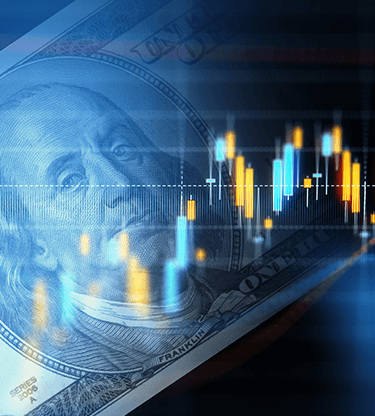Daily Brief

Two trillion dollars?
4 minute readReassessment
It has been a week for investors to reassess their views on financial markets, often more than once. Possibilities such as negative UK interest rates, rising inflation, fiscal stimulus and an oversupply of government bonds have sent investors in conceptual circles, in many cases only to arrive back at the number they first thought of.
On Wednesday the question was about central banks, and where they might be going with monetary policy once the Covid vaccines have restored normality of some sort to the global economy. On Monday there had been talk of the US Federal Reserve tapering – running down – its programme of quantitative easing. The following day there was pushback from James Bullard and Eric Rosengren, both of whom insisted that there would be no change before next year. Yesterday Fed Governor Lael Brainard sided with Bullard and Rosengren, saying the economy will need monetary support “for quite some time”. In Europe, ECB President Christine Lagarde told a similar story, declaring “any kind of tightening at the moment would be very unwarranted… and could lead to very serious risks”.
Another debate, to which there is no sure answer, is about how the inevitably huge government bond issuance on both sides of the Atlantic will affect yields and currencies. Classically, the more the borrowing, the more interest the government has to pay, therefore the higher the yield. The modern counter to that argument has it that investors will nowadays absorb all the bonds that developed world governments can throw at them, because they have nowhere else to put their money. The discussion could become more heated today after US President-elect Biden reveals his stimulus plan, said to run to “trillions of dollars”.
Going nowhere
The introspection left currencies with no clear plan of action. Sterling was on average unchanged, as were the Swiss franc, the Japanese yen, the NZ dollar and the Norwegian krone. The Canadian dollar was the winner with an average gain of 0.5%, and the Swedish krona booked the biggest loss, 0.8%. Even with hindsight, both moves looked a bit random.
Data from Europe centred on industrial production. In the Eurozone it went up by 2.5% in November, cutting its annual decline to 0.6%.
The important US numbers were for consumer prices in December. Inflation picked up to 1.4% overall, and excluding food and energy it was unchanged at 1.6%. The Fed’s Beige Book assessment of the national economy showed most regions reporting a modest increase in activity.
UK output and trade
Sterling’s challenge tomorrow will be the UK data for manufacturing and industrial production, and the trade deficit for November. Early this morning it felt no effect from the RICS House Price Balance, which was a point lower on the month at a still-positive 65%.
A statistically thin day today began with the Chinese trade figures, They showed exports increasing by 18.1% in 2020 with imports growing by little more than a third of that; 6.5%. At lunchtime the European Central Bank releases the report of its last policy meeting. US weekly jobless claims come later, and Fed Chairman Powell will be speaking. Watch out for Joe Biden’s stimulus announcement.
As well as the UK data, Friday morning brings the numbers for Australian mortgage lending and French, Spanish and Swedish inflation. The afternoon brings US retail sales and industrial production as well as the provisional Michigan index of consumer sentiment. At some point the NIESR will reveal its estimate of UK fourth quarter economic growth or, more likely, shrinkage.
Weekly roundup



